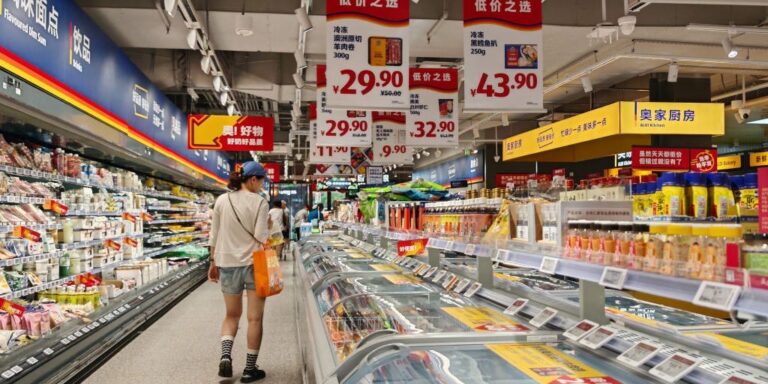- China’s economy grew 4.7 percent in the second quarter, below the 5.1 percent growth analysts had expected.
- June data showed exports were strong but domestic consumption was weak, with retail sales growing by just 2 percent.
- China’s disposable income rose in the second quarter of this year, but consumers are reluctant to spend.
Official data released on Monday showed that Chinese consumers’ savings are weighing on the country’s economy, even as foreign demand is supporting exports.
China’s economy grew 4.7 percent in the second quarter of this year from a year earlier, according to the National Bureau of Statistics, but that fell short of the 5.1 percent growth forecast by analysts polled by Reuters. The growth rate was slower than the 5.3 percent growth China recorded in the first quarter of 2024.
Weakening consumption has held back growth, with retail sales up just 2% in June from a year earlier, while exports hit a record $99 billion in June, a sign of strong demand in other parts of the world.
The latest data shows that the Chinese economy continues to grow Real Estate Crisisstock market volatility, geopolitical headwinds, and Demographic challenges.
People don’t spend enough money
Despite an increase in disposable income in the second quarter of this year, Chinese consumers are reluctant to spend.
Weak consumer demand is bad for the Chinese economy, Deflationary pressure This comes against the backdrop of rising wages and slowing spending.
Still, Beijing described China’s first-half growth rate, which stood at 5.0 percent, as “broadly stable with steady progress.”
However, they also recognise challenges in the consumer sector.
“It is important to recognize that the external environment is complex and intertwined, domestic effective demand is still insufficient, and the foundation for a healthy economic recovery and growth needs to be further strengthened,” China’s National Bureau of Statistics said on Monday.
Economic outlook for the second half of the year
China’s economic outlook for the second half of the year is also not very bright.
Nomura economists said in a report last week that China’s first-quarter growth was supported by policies such as the property stimulus package.
But they added that headwinds will continue in the second half of the year, including “lower subdued consumer demand post-COVID.”
Amid growing geopolitical uncertainty, sluggish domestic demand in China could pose even bigger problems later this year.
“With polls now showing Donald Trump as the likely president, growth reliance on external demand and current resilience in manufacturing could raise concerns about escalating trade tensions,” Yep Jun Rong, market analyst at trading platform IG, wrote on Monday after the China data was released.
China is undergoing a difficult economic transition from a focus on real estate and low-end manufacturing to hot new areas such as electric vehicles, batteries and solar cells, but growth in these sectors may slow later this year as investment enthusiasm cools, Nomura economists wrote.
The Chinese government has set a growth target of around 5% for the world’s second-largest economy, but analysts say the figure is ambitious.

